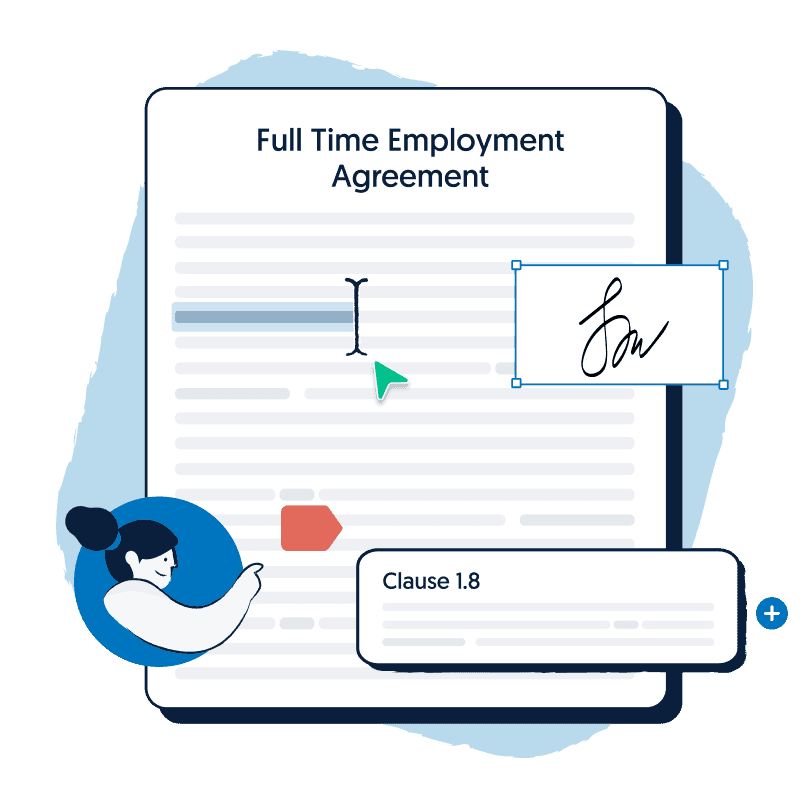Paul is an intern at Lawpath, and is currently studying a combined Arts/Laws degree with a major in criminology at Macquarie University. Paul has an interest in legal tech, which complements his broader interest in cyber crime/security and the way in which it is changing the world.
Having sufficient rest and time out in a busy work environment can ensure productivity, and help maintain professional standards. It is in the interests of employers to allocate employees breaks. If you find yourself asking how long should my break be as an employee, this article may be of some help to you. The award type, industry, and the employment agreement all determine employee entitlements. We have outlined some important information regarding these factors below.
Am I entitled to a paid break?
Take this short quiz to see what type of breaks you may be entitled to.
1. What type of employee are you?
2. How many hours do you usually work per shift?
3. Are you covered by an Award, Enterprise Agreement, or employment contract?
Your result:
This is a general guide. For more detail, keep reading below or refer to your award or agreement.
Rest break versus meal break
The type of break is an important factor in determining the length. A rest break allows an employee to rest for a short period of time during work hours. Conversely, a meal break is a longer period of uninterrupted rest that allows the employee to eat a meal.
Award type
The award type will dictate the length and number of employee breaks. It is important that employers and employers alike familiarise themselves with the relevant award types. The Australian Government Fair Work Ombudsmen website contains more information on this. These standards provide information on the following:
- Firstly, the length of the breaks
- Secondly, when they need to be taken
- Lastly, the rules about payment
Industry standards for employee breaks
Similarly, your industry influences the number of hours you are required to work. This will impact upon the number of breaks you are entitled to, and the length and timing of those breaks. The industry standards will often be in keeping with any award type requirements. It is nonetheless wise to be aware of any relevant thresholds and standards within your particular industry. Being part of specific industry associations, unions and communities will help provide you with the answers you may need. Additionally, the Fair Work Ombudsmen covers the variances between industries on its website.
Employment agreement
Your specific employment agreement will play a significant role in terms of how long your breaks are. Provided they meet minimum industry and award standards, your employment agreement may even provide you with more, or longer breaks than required. It is important when drafting an employment agreement that these things are considered. Consulting a contract lawyer throughout this process is recommended.

Get your Full Time Employment Agreement legal document for free.
Commonly held break entitlements
Whilst many of the foregoing factors will determine specific rest break entitlements, the following rest breaks are consistent across a number of industries and awards:
- Less than 4 hours work: no rest break, no meal break
- From 4 to 5 hours work: one 10 minute rest break, no meal break
- Between 5 and 7 hours work: one 10 minute rest break, one meal break of 30 to 60 minutes
- More than 7, but less than 10 hours work: two 10 minute rest breaks, one in the first half of the shift, one in the second half of the shift, one meal break of 30 to 60 minutes
- 10 or more hours of work: two 10 minute rest breaks, one in the first half of the shift, one in the second half of the shift, two one meal breaks of 30 to 60 minutes
Whilst there are seemingly a few generally accepted rules, a lot depends on your individual circumstances. It is very important that you speak to your employer to clarify any of these issues. If you are still uncertain, it may also be valuable to consult with an employment lawyer to help your situation.

Get a fixed-fee quote from Australia's largest lawyer marketplace.






